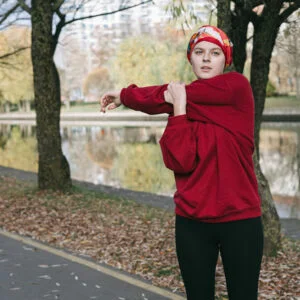
Shoulder injuries are extremely prevalent musculoskeletal injuries in sport and the general population, and can affect people of any age or gender. Shoulder related pain accounted for 1.2% of GP visits in 2015-2016. The shoulder is a system of a large ball sitting on a small socket joint, with muscles to pack out and support it. This all is part of a bigger joint complex of the shoulder blade, AC joint and spinal joints. A lot goes on in a shoulder motion!
The shoulder joint is a complex and mobile joint. Due to its extreme mobility combined with ability to produce and absorb force, this leaves it susceptible to injury. There are many different types of shoulder conditions. They can be related to structures including the rotator cuff muscles/tendons, glenohumeral joint (GH joint) and acromioclavicular joint (AC joint). Shoulder injuries can also be related to other structures such as our neck and back, and have a tendency to be closely related.
Injuries to those areas above can include the following:
Risk factors include:
Shoulder injuries can occur in people of all ages. It’s more common to see more muscular-related injuries to people who are of a younger demographic playing lots of sports, going to the gym and or working physically taxing jobs. In the older population, injuries such as chronic shoulder instability, frozen shoulder and nerve-related conditions are more prominent, as they are more likely to occur due to changes in the joints and muscles over time. While these are common findings, this is not always the case. For instance, an older person is just as if not more susceptible to a muscle tear as a younger person is to shoulder instabilities. A thorough examination and accurate diagnosis by our Physio is key to help getting you back on track with your shoulder issue.
Shoulder injury symptoms will be dependent on the structure affected and how it was injured. People tell us it is difficult to dress, lift or carry things, play sports. Pain, limited range of movement, weakness, swelling and tenderness, numbness or tingling in the arms and hands, can be symptoms of shoulder injuries. It’s important to have a professional assist in the diagnosis and management of shoulder symptoms as they require injury-specific management and rehabilitation to improve symptoms and prevent chronic issues.
This is because, one person’s experience of their injury will be different to another’s, even if the same diagnosis is given. It is important not to just match the diagnosis to the injury but also to look at the individual make up and factors that got that person injured in the first place. Someone with a muscular tear to one of the rotator cuff muscles, will likely have a moment in time when they felt a sharp pain in the shoulder when using the muscles for an activity like throwing or bowling. They will likely have limited range and weakness in their shoulder and arm. However, another person with the same shoulder diagnosis may not recall an event, but different features or individual mechanics lead to their problem and diagnosis.
So your symptoms and your story help to diagnose but specifically, your story helps to uncover what lies behind that diagnosis and individual to you.
There are various different methods to treat the shoulder. Options for Manual Therapy include:
As well as manual therapy, management will include exercise rehabilitation focused on building up the area affected to improve function. The goal is not always to make the shoulder stronger, as it might be as simple as teaching people the right way to use their already strong shoulder or focusing on mobility. Exercises here are aimed at providing more control and movement through the shoulder.
Other aspects of management could include taping, ice and anti-inflammatory medication if deemed suitable for your specific injury. Your practitioner will advise you if referral to a specialist is required as part of your management plan.
We are a clinic of experienced practitioners working together for you. We use the best scientific research to inform the decisions we take for your care. We do this with honesty and empathy.
Generally, mechanical shoulder pain is benign. A physiotherapist can screen you to help rule out potentially serious causes. Anything out of the ordinary can be discussed between your practitioner and your doctor.
Getting imaging can cause you to focus on changes that are just normal as a part of life’s journey. If you need imaging we will let you know, we will also work out what kind of imaging you need. We have more to read here.
That clicking sensation in the shoulder may be due to the joint not rolling and gliding as smoothly due to controlled motion within the joint. It may also be simply normal, especially if it is not painful. Your practitioner can give you advice and exercises to help alleviate that sensation and the pain.
Your shoulder should not feel unstable or feel like it is going to give way when doing upper body tasks. This needs to be managed and addressed by your health practitioner.
Your shoulder pain could absolutely be coming from your neck. There is a strong relationship between the nerves and muscular attachments between the shoulder and the neck, and one area can be responsible for pain in the other.
Exercise rehab will likely be a key component of management for the shoulder. It will be important to try and maintain fitness while improving shoulder function.